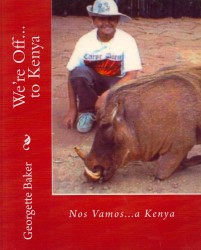- ホーム
- > 洋書
- > 英文書
- > Business / Economics
Full Description
Humans and animals have developed multiple and complex interactions in the fields of tourism, leisure, and development. However, much of the existing research on how humans and animals interact in these fields has emerged from within the context of developed countries. As a result, little has been documented about human-animal interactions in the socioeconomic, cultural, and environmental contexts of countries in the Global South. Specifically, the diversity and complexity of interspecies relationships in tourism, leisure, and local development in Latin America have been largely ignored in Anglo-Saxon literature. This has resulted in a limited, partial, and hegemonic understanding and debate about human-animal relationships globally, dominated by certain regions of the world. This book addresses this gap by documenting multiple and complex relationships between humans and animals in the fields of tourism, leisure, and local development in countries in Latin America. The book: Brings together empirical and conceptual works that reveal different disciplinary, theoretical, ethical, methodological, and practical perspectives. Reveals how human-animal relationships - both domestic and wild - can result in co-created interspecies experiences, conflicts, conservation efforts, welfare, and local development of human societies in the region. Equips stakeholders with conceptual frameworks and actionable tools to formulate policies that blend animal welfare and sustainability in Latin American tourism and recreation strategies. Challenges dominant narratives from the Global North regarding tourism and conservation, promoting a more inclusive and nuanced approach. This book will be of interest to researchers, professionals and policymakers within tourism, leisure, animal welfare, conservation and destination development.
Contents
Introduction: Introduction 1: Interspecies relations: Co-experiences and Conflicts Chapter 1: Human-Dog Play: From Solitary Play to Interspecies Social Play Chapter 2: Fishermen-Crocodile Interactions in a Mexican Tourist Context Chapter 3: Equine Tourism and Leisure and Sport as "Horse Work" in Malargüe: The past, present and (potential) future of horse-human relations in Argentina Chapter 4: Destigmatising Interspecies Relations: Donkeys in Mexican tourism Section 2: Animal Conservation, Welfare and Sustainability Chapter 5: Zoos: Centres for Recreation and Promotion of Empathy Chapter 6: Reptiles in Ecological Parks Aiming for Conservation and Environmental Education in Mexico Chapter 7: In the Footsteps of Working Dogs: Notes on dog labour in three distinct contexts in South America Chapter 8: Do Not Disturb: Ecotourism, bat diversity, and abundance in caves Chapter 9: Ecotourism as an Economic Source for Environmental Education and Research: The Tirimbina Model Chapter 10: Virtual Trails: An option for ecotourism in scuba diving sites in Mexico Section 3: Wildlife and Local Development Chapter 11: Animals and Leisure Experiences in Wild Protected Areas in Central-South Chile Chapter 12: From Deserts to Wetlands, from Harvest to Observation: Ecotourism for conservation of Bighorn sheep and jaguars Chapter 13: Nature-based Tourism and its Impact on Local Communities and Animals: Examples from three Mexican Biosphere Reserves Chapter 14: Current Practices in Whale Watching in Banderas Bay, Mexico Conclusion: Conclusion








